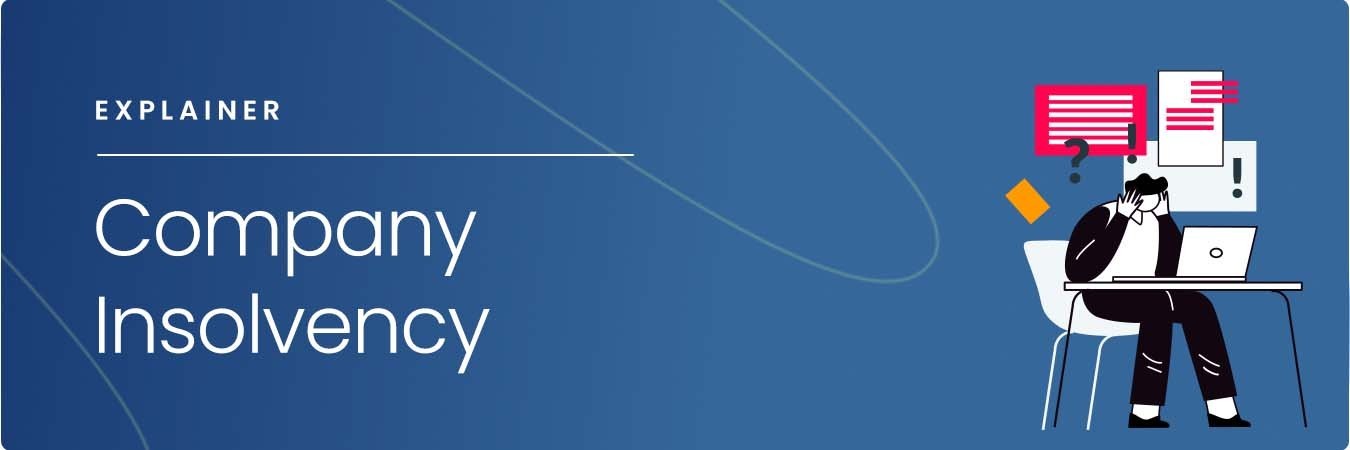The Definitive Guide for Insolvency Practitioner
Table of ContentsGetting The Insolvency Practitioner To WorkThe Ultimate Guide To Insolvency PractitionerThe 9-Second Trick For Insolvency PractitionerRumored Buzz on Insolvency PractitionerThe Ultimate Guide To Insolvency PractitionerInsolvency Practitioner for DummiesThe Of Insolvency Practitioner
Bankruptcy is when liabilities are greater than the worth of the firm, or when a borrower can not pay the financial obligations they owe. A business can end up being bankrupt as a result of a variety of scenarios that lead to bad money flow. When confronted with insolvency, an organization or individual can speak to financial institutions straight and restructure financial obligations to pay them off.Service proprietors might get in touch with financial institutions straight and restructure debts right into even more workable installments. Lenders are commonly responsive to this approach because they desire to be repaid and prevent losses, even if the settlement is on a postponed routine.
Facts About Insolvency Practitioner Uncovered
The owner creates a proposition outlining how the debt may be restructured using expense decreases or various other prepare for support. The proposition reveals creditors just how business might generate sufficient cash flow for successful procedures while paying its financial obligations. Commonly, a forgiven financial debt might be considered income by the Irs (INTERNAL REVENUE SERVICE).

The 9-Minute Rule for Insolvency Practitioner
The business might finish up paying big amounts of money in problems and be not able to proceed operations. When procedures stop, so does the firm's earnings. Lack of earnings results in accounts payable and creditors asking for money owed to them. Some business become financially troubled due to the fact that their products or services do not progress to fit consumers' transforming requirements.
Expenditures go beyond earnings and expenses continue to be unpaid. Kinds of insolvency include cash-flow insolvency and balance-sheet bankruptcy. Cash-flow bankruptcy happens when a company has the properties to cover their financial obligations however they are in the wrong form, such as property as opposed to fluid funds. Balance-sheet bankruptcy, on the various other hand, suggests a lack of properties in any kind of form to cover financial obligations.
The IRS states that a person is financially troubled when the total obligations go beyond complete possessions. A personal bankruptcy, on the various other hand, is an actual court order that illustrates just how a bankrupt individual or business will pay off their creditors, or exactly how see this site they will certainly market their possessions in order to make the payments.
The 7-Second Trick For Insolvency Practitioner

Debt debt consolidation is when you integrate several loans right into one new finance, typically to achieve much better terms. Insolvency is not the like personal bankruptcy, although a business that has actually ended up being financially troubled might apply for personal bankruptcy. Bankruptcy is the state of not having the ability to pay your commitments while bankruptcy is a legal process to discharge your financial debts.
Comprehending the variables that can cause insolvency, such as overspending, can help you prevent bankruptcy and its effects.
Some Ideas on Insolvency Practitioner You Need To Know
It is directory popular that supervisors and police officers of corporations (and supervisors of restricted responsibility firms) owe fiduciary obligations to their companies and their shareholders (or participants). These fiduciary responsibilities are specified by state statutes and, though there are variations from state to state, they typically include a responsibility of loyalty and a duty of care.
The obligation of care needs supervisors and policemans to exercise persistance, to make educated decisions, and to act in good confidence to ensure that their activities are in the finest interest of the company. Though beyond the extent of this discussion, some states enable these duties to be limited either by so keeping in mind in the business records or abiding by other demands.
The Of Insolvency Practitioner
The majority of states specify bankruptcy in two methods( 1) when a business's liabilities come to be greater than the amount of its properties or (2) when the company comes to be unable to pay its financial obligations as they become dueand embrace both definitions (Insolvency Practitioner). The change in duties occurs due to the fact that when a company is insolvent, there is no worth in the business beyond that owed to the company's lenders so that the equity holders no more have a financial risk in the firm
Beware regarding giving shareholders favoritism at the cost of creditors (e.g., authorizing and moneying a dividend or a stock redemption). Be mindful regarding favoritism in between classes of shareholders. Make practical efforts to discover all the truths before taking a certain strategy; directors ought to really think that any choices made are in the most effective interests of the company in its totality (i.e., choices will certainly be reviewed in hindsight because of the result of such activities on the firm).
In any personal bankruptcy or insolvency case, payments made to certain creditors at the cost of other creditors can be clawed back, specifically if there is some link in between the firm and the creditor. Take into consideration proposing at an annual stockholder conference (or any type of various other meeting of investors) a resolution verifying that all prior organization decisions and activities taken by the Full Report supervisors and officers of the company were taken in good faith after an exercise of sensible treatment.
Our Insolvency Practitioner Diaries
Totally disclose any type of personal or organization relationships with celebrations beyond of purchases entailing the firm to stay clear of the appearance of a problem of rate of interest. In assessing potential fund increasing transactions or a sale of properties of the distressed company, realize that these transactions may be scrutinized later taking into account any kind of subsequent growth of directors' fiduciary tasks to consist of creditors.